Alphabet familiarity Alphabet Worksheets for Ages 4-6
9 filtered results
-
From - To
Enhance your child's letter recognition with our engaging Alphabet Familiarity Worksheets, designed specifically for ages 4-6. These fun, interactive activities will help young learners become familiar with the alphabet, reinforcing their understanding of each letter’s shape and sound. With vibrant illustrations and creative exercises, kids will immerse themselves in enjoyable tasks such as tracing, identifying, and matching letters. Our worksheets are tailored to keep little hands and curious minds busy while building essential early literacy skills. Perfect for at-home learning or classroom use, our Alphabet Familiarity Worksheets will set a strong foundation for your child’s educational journey. Start exploring today!
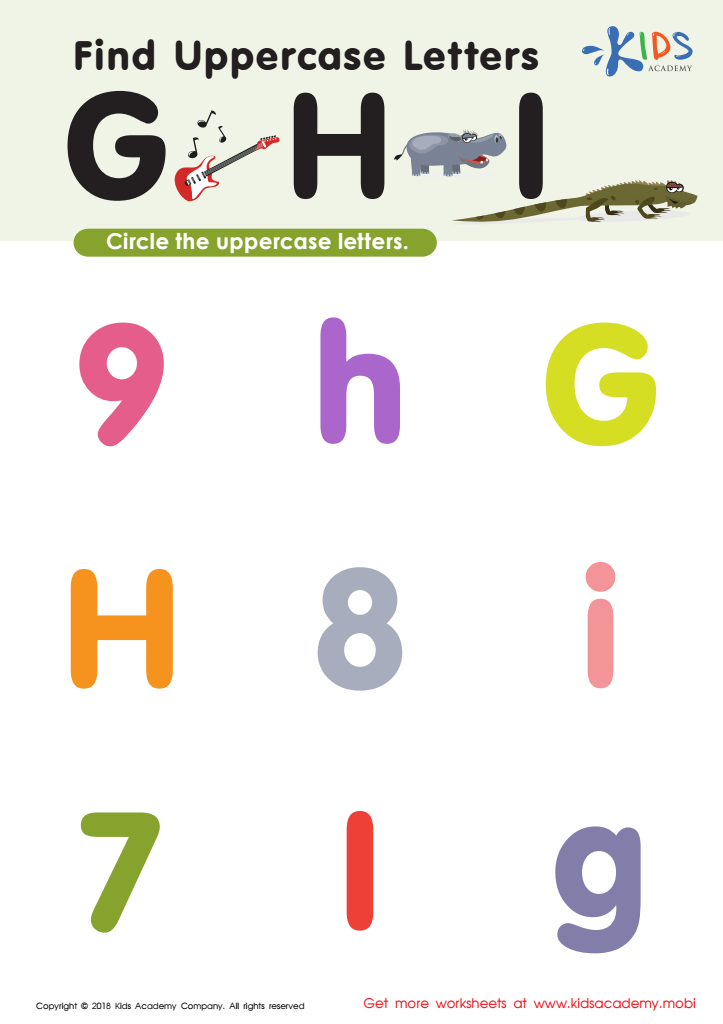

Find Uppercase Letters G, H, and I Worksheet


Find Uppercase Letters Worksheet


Find Uppercase Letters J, K, and L Worksheet
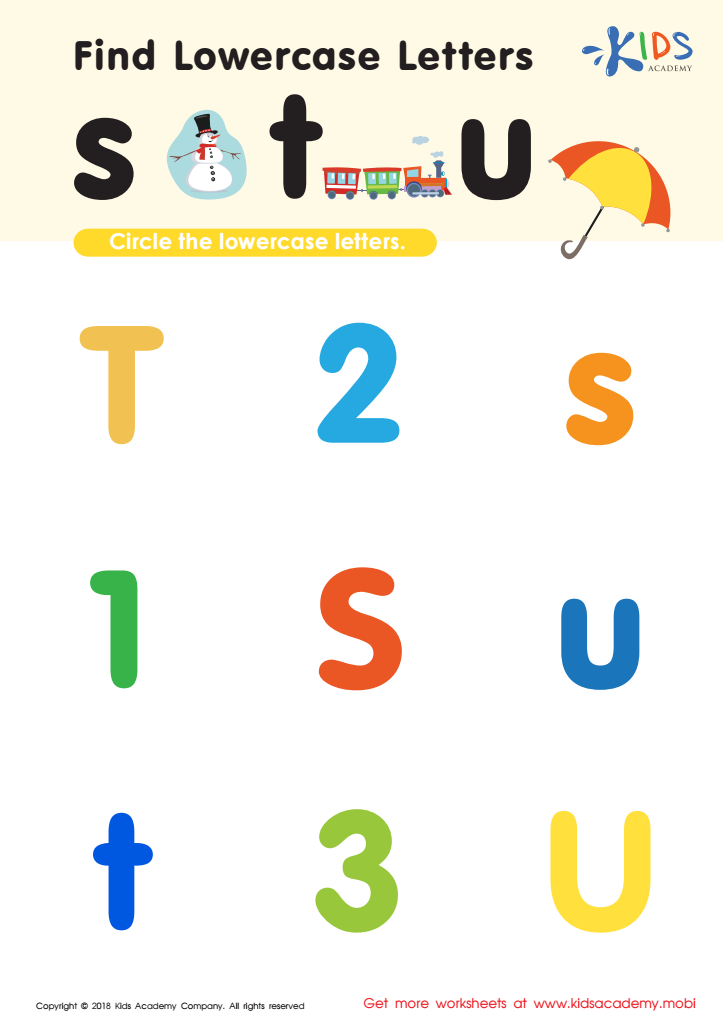

Find lowercase Letters s t u Worksheet


Find Uppercase Letters A, B, and C Worksheet
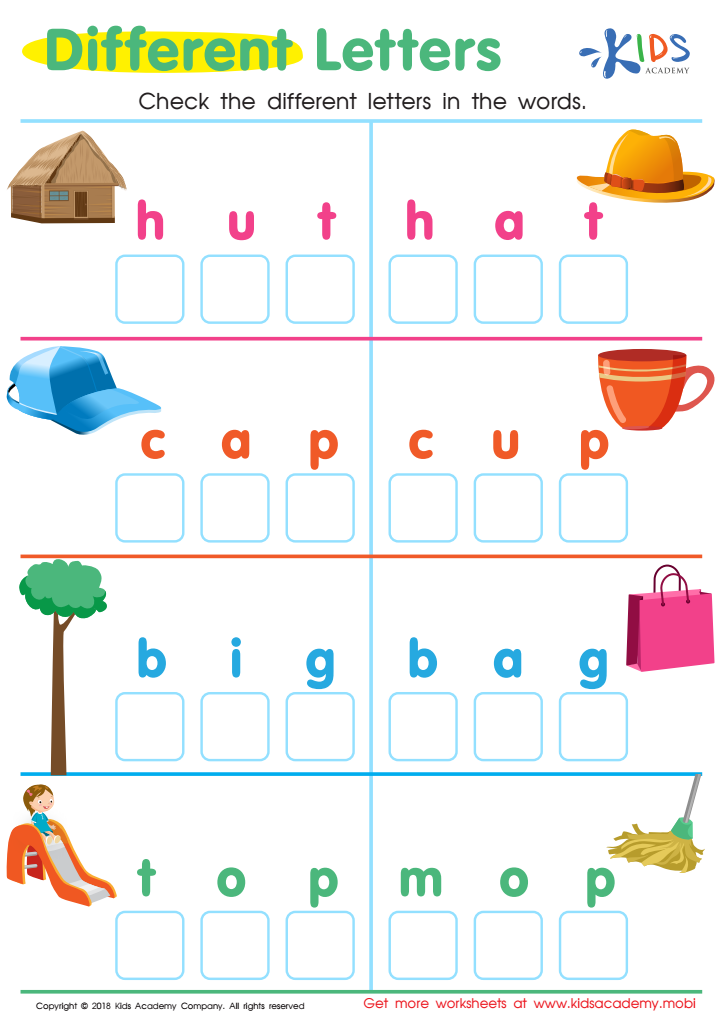

Different Letters Reading Worksheet
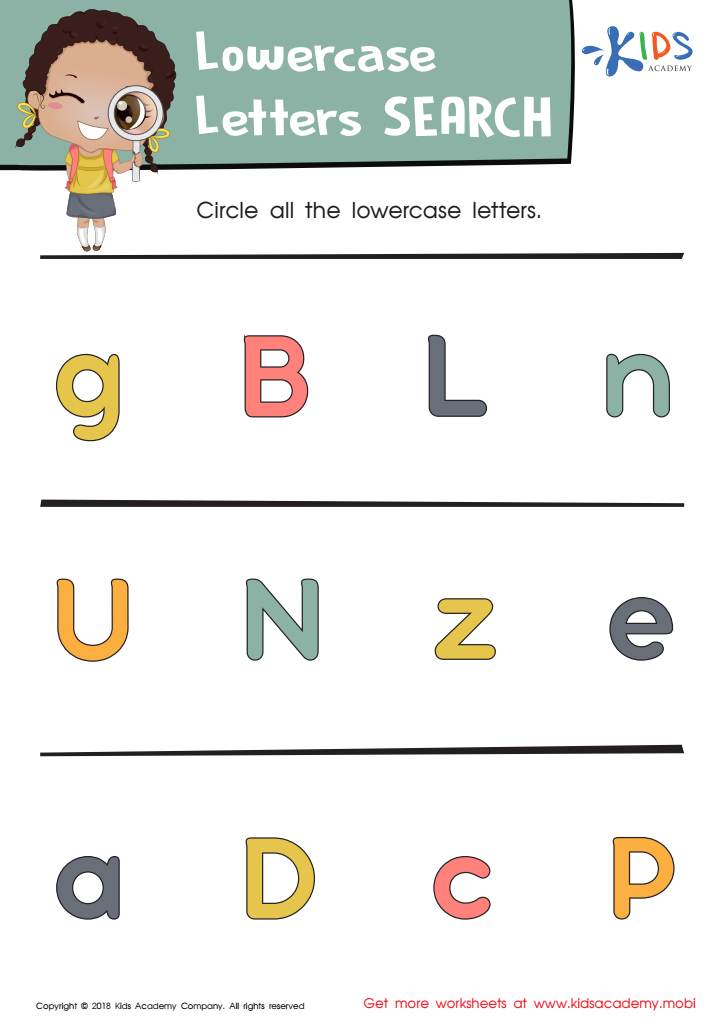

Lowercase Letters Search: Assessment Worksheet
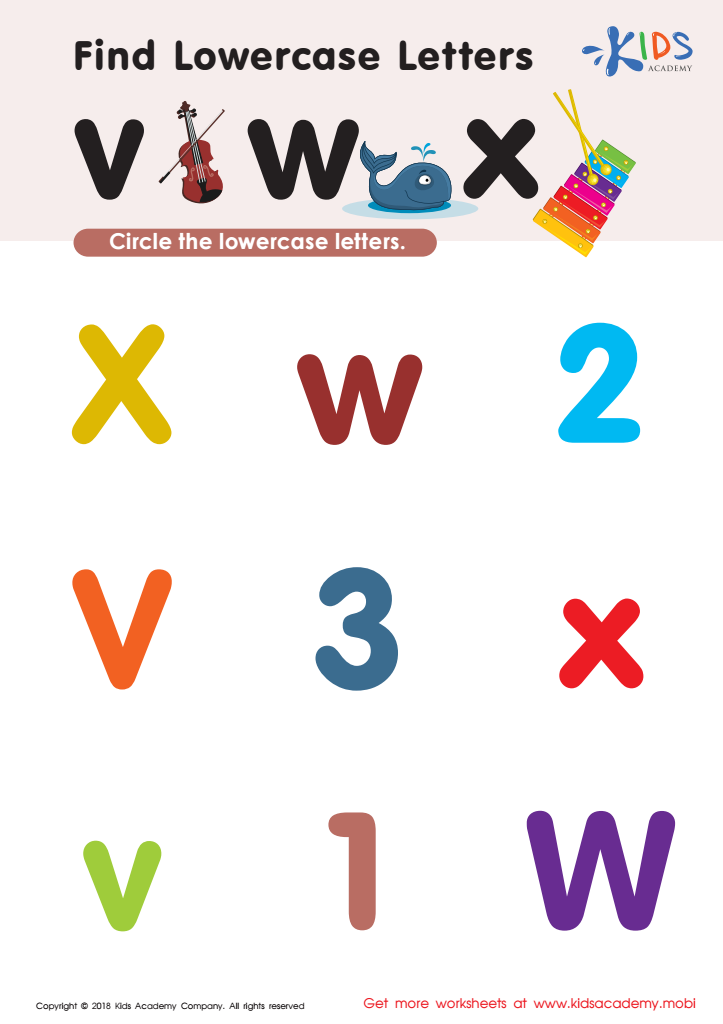

Find Lowercase Letters v w x Worksheet
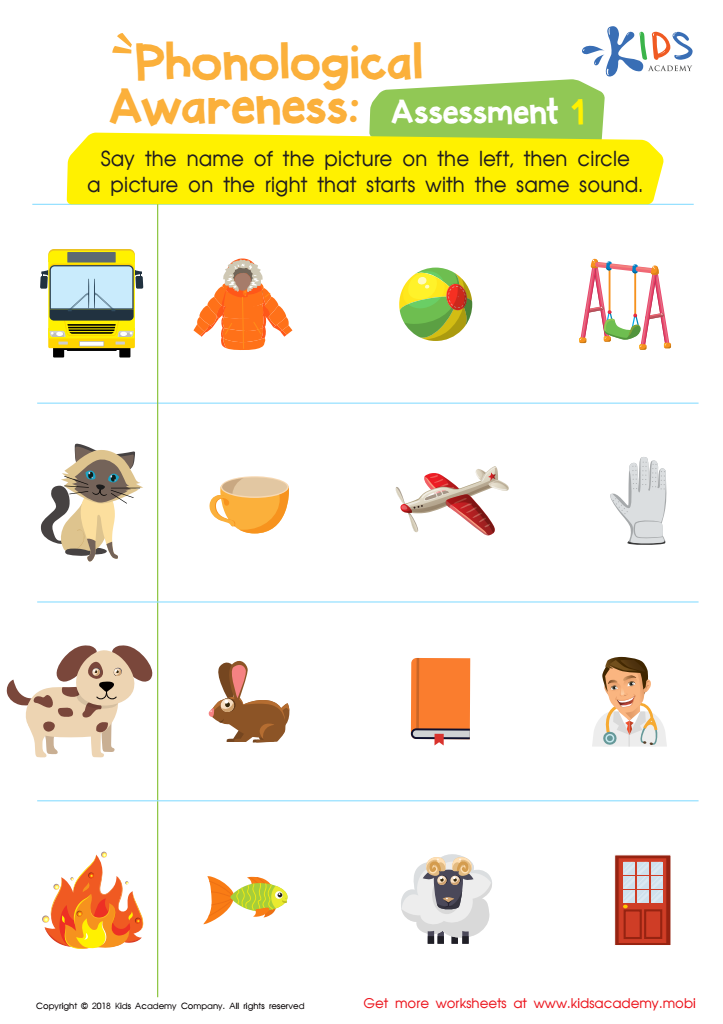

Phonological Awareness: Assessment 1 Worksheet
Alphabet familiarity is crucial for children aged 4-6 as it lays the foundation for literacy, which is essential for academic success. At this stage, children are developing their language skills, and understanding the alphabet helps them recognize letters, associate sounds with symbols, and begin forming words. This familiarity fosters confidence and enthusiasm for learning, which is vital at such a formative age.
Moreover, early knowledge of the alphabet enhances phonemic awareness, a skill that allows children to hear, identify, and manipulate the individual sounds in spoken words. This skill is directly linked to reading proficiency and can influence future learning outcomes. When parents and teachers prioritize alphabet familiarity, they equip children with tools that not only aid in reading and writing but also promote cognitive development and critical thinking.
Engaging with the alphabet can be an enjoyable experience through games, songs, and interactive activities, making learning enjoyable and memorable. Additionally, a supportive environment where parents and teachers reinforce these skills promotes a love for reading, which translates into lifelong learning habits. Therefore, prioritizing alphabet familiarity is essential for nurturing well-rounded, literate, and confident learners.

 Assign to My Students
Assign to My Students





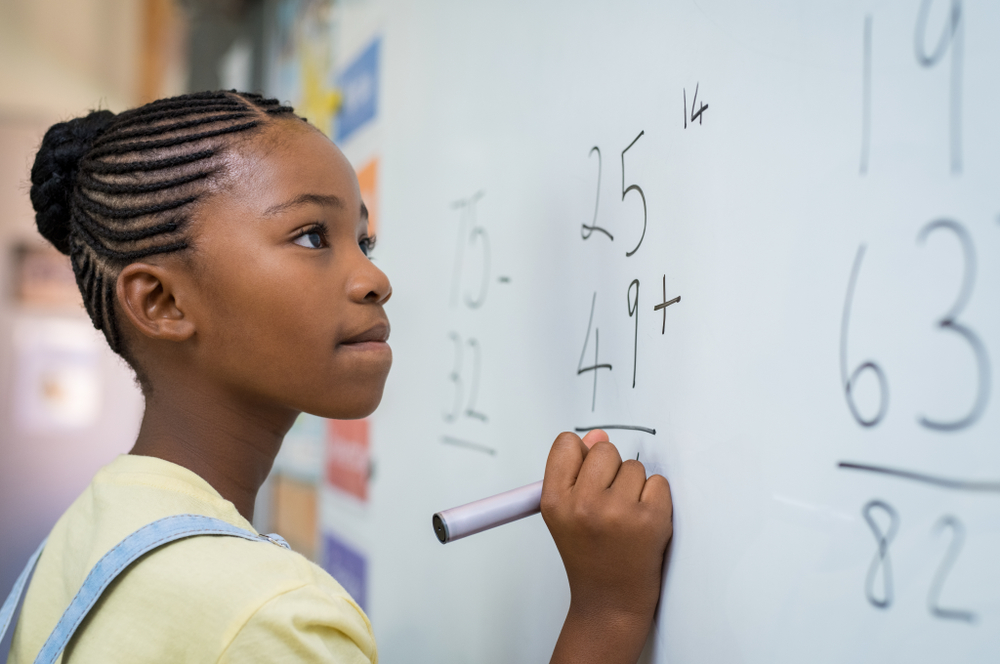



.jpg)









